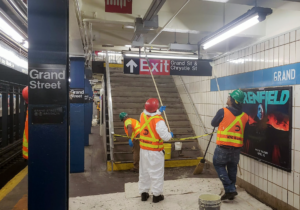Caltrain:
Written by adminCalifornia's Caltrain said an analysis of preliminary data has indicated that the Peninsula's rail corridor can accommodate integrated high-speed rail and Caltrain service largely through modernizing and then sharing the corridor's existing track infrastructure in most areas. The analysis supports a concept proposed by U.S. Rep. Anna Eshoo, State Senator Joe Simitian and State Assemblyman Richard Gordon that calls for the project to minimize community impacts and considerably reduce the project's cost by remaining substantially within the existing Caltrain right-of-way. LTK Engineering Services to assessed the capacity of the corridor using a computer model to simulate rail operations. The analysis demonstrates that electrification of the corridor and installation of an advanced signaling system could provide sufficient track capacity to feasibly operate six electric Caltrain trains and two high-speed trains per hour. The addition of a seven-to-eight-mile four-track section near the middle of the rail line would provide a set of passing tracks and expand capacity even further to accommodate these trains. To date, design alternatives for the project have consisted of fully grade-separated, four-track options that span most of the corridor's length. The Caltrain analysis indicates that a much-less intrusive, more cost-effective alternative is sufficiently valid to justify additional study. Compared to previous alternatives, the blended approach would accommodate high-speed rail at a lower cost by primarily utilizing Caltrain's existing right-of-way and would connect to the Downtown Rail Extension Project, providing Caltrain and high-speed trains with access to the Transbay Transit Center, which is currently under construction in downtown San Francisco. "We're encouraged," said Caltrain Executive Director Mike Scanlon. "More analysis is needed but this operational concept could help deliver a state-of-the-art rail system in a way that is cost effective and minimizes community impacts." Moving forward, other considerations remain unresolved, including a precise definition of the project's infrastructure needs including the location and design of the potential four-track section and a better understanding of the project's total cost. The approach will also need to be adopted by the California High-Speed Rail Authority, which is currently reviewing the analysis. In the coming weeks, Caltrain plans to engage community stakeholders in a public process that includes opportunities to review and discuss the results and provide feedback that will help guide future analysis. San Mateo County Supervisor Adrienne Tissier welcomed the results. "If we're going to realize all of the benefits of modernizing the Caltrain corridor, we're going to need to explore creative solutions," said Tissier, who also chairs the Metropolitan Transportation Commission and serves on the Caltrain Board of Directors. "These findings are extremely encouraging because they demonstrate that there is a path forward and an approach that could finally help build some regional consensus."





